How One Young Rancher Started (and Grew) His Regenerative Operation
Brett Peshek describes the dramatic improvements he’s seen in just five years of increasing biodiversity and adding enterprises. He’s a man with a vision.
I often joke, “If you start your morning with a cold shower, nothing worse can happen to you that day in farming and ranching.” However, I really do take cold showers every morning, for that reason and to create an open mindset to find the best ways to manage my multiple enterprises in a regenerative operation. I believe an open mindset is key, whether you are farming, ranching, starting a business or walking through everyday life. This is how I’ve been able to start and manage what’s become a diverse regenerative farm and ecosystem.
I grew up on a small farm in Nebraska. I had always been around livestock and ranching through work or visiting my family’s ranch, but I always had a vision of starting my own operation someday. I moved on to study agronomy in college, where I developed an interest in cover crops and a passion for wildlife nutrition. That led me to joining Green Cover Seed as a sales agronomist and moving to southwest Oklahoma. While working for Green Cover, I was blessed to work with and learn from many great farmers and ranchers across the Midwest and the Southern Plains.
I truly believe we don’t own the land for ourselves, but rather are leasing it from our future generations. As stewards, we need to continue to improve it for them.
In 2017, I jumped at an opportunity to start my regenerative ranching business by renting unused pasture ground from an Oklahoma farmer with a diverse no-till operation. I decided to begin with a cow-calf operation because of familiarity, having worked around cattle through high school and college and being passionate about my grandfather’s cattle ranch in western Nebraska. With my experience working with cover crops and exposure to regenerative ranching, my ultimate goal from the beginning was to graze year round.
The pastures I began with consisted of primarily bermudagrass that had been managed with spraying, fertilizing, lots of haying and grazing. Rather than investing large amounts of capital on haying equipment, I decided to diversify my pastures immediately by overseeding diverse cover crops, such as legumes and other biannual forbs. On top of the diversification, I adopted an adaptive grazing management system and, when I did, I eliminated the need for large amounts of hay or haying equipment within the first year. I also began to see the soils drastically change in water infiltration and organic matter due to the diversity in plants I established.
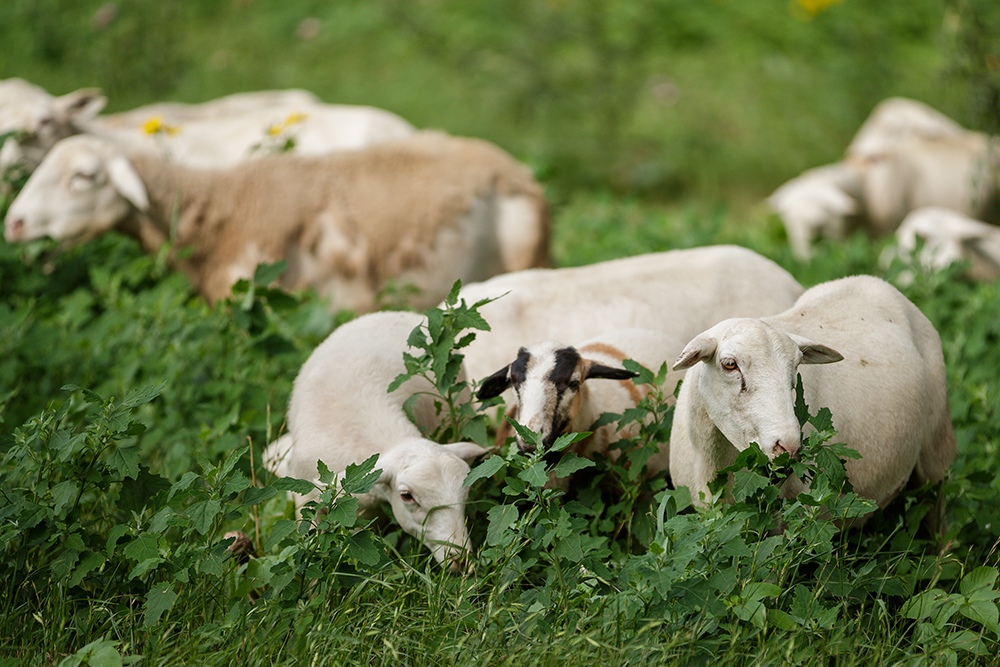
As I focus on a very low-input system, I don’t use commercial fertility with what I plant, and I don’t worry about the broadleaf weeds that come up when my pastures are resting. Much of my livestock use the broadleaves as a source for minerals and, as a result, eliminated the need for chemical inputs entirely. Some of my favorite broadleaves, like sunflowers and giant ragweed, provide a much-needed energy source for my livestock in the fall while grasses are going dormant.
I also learned that with our native warm-season grasses, 80 to 90% of the year’s production happens by the end of May. I really focus on how I can better manage up to the month of May, because it will ultimately dictate the winter season in the following year in terms of stockpiling forages. However, I may feed a little hay in February and March to rest the oncoming grasses and let them get ahead early in the year. This helps stockpile feed going into fall – especially in a drought year.
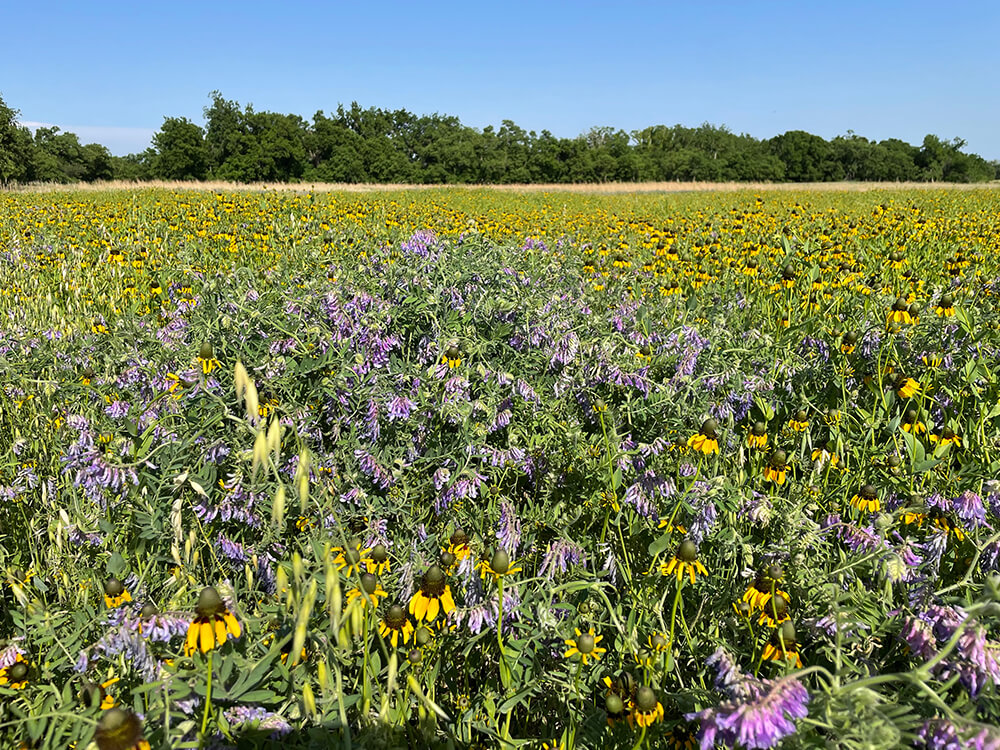
Being open to adjustments
Early on, I changed my calving season to April. This drastically changed the cows’ forage and nutritional demand in order to match it more closely with the spring grasses. As a result, I can get away with little supplementation along with the stockpiled forages. I learned I had some cows that didn’t match my system, both genetically and phenotypically, and they fell out over time as they wouldn’t breed back in time. However, through the soil health and genetic selection, it’s really helped me develop an animal system that doesn’t take many inputs other than time, management and land, of course.
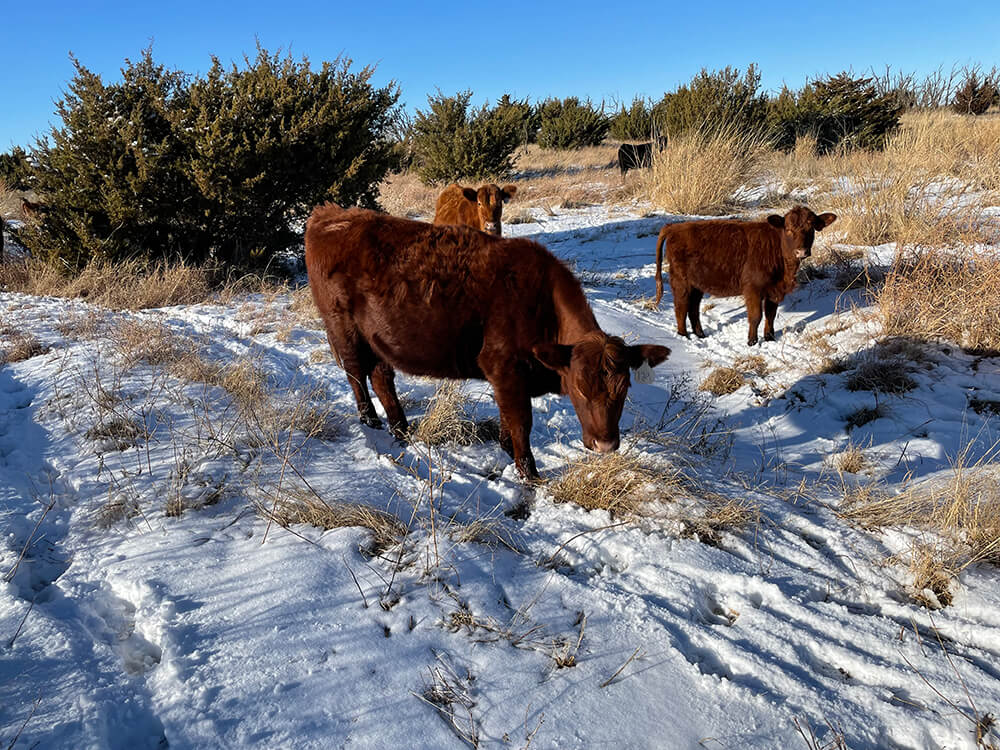
Expanding acres, species and enterprises
In 2019, I had the opportunity to buy my own farm, approximately 240 acres that consisted of primarily degraded native pastures on the uplands, some improved-species pastures, and cropland. I immediately knew that my low-input cow-calf herd alone would be hard-pressed to pay for the land. So, like an ecosystem, I began to diversify the types of animals that were on my farm.
I realized that I needed animals that had faster turnover and added value. So, the first animals I brought in were pastured pigs. While the common views are that feral pigs are destructive pests and that one shouldn’t run swine to improve soil health, my domestic swine managed under an adaptive grazing system actually encouraged more plant and animal diversity in the ecosystem. They are some of my higher-density, heavier-impact animals in my adaptive grazing system. Like bison, they create wallows that catch runoff water on hillsides and hold moisture longer, encouraging different plants to grow and improving the overall biomass production of each pasture.
Most pastured pigs are utilized in brushy areas, where they can hit a reset button on encroaching brush. However, I decided to run my pastured pigs primarily on degraded rangeland because of the added fertility to degraded areas. In just two years, many of those areas have transformed from short-stature and quick-maturing grasses to tall, lush, native grasses and beautiful flowering plants.
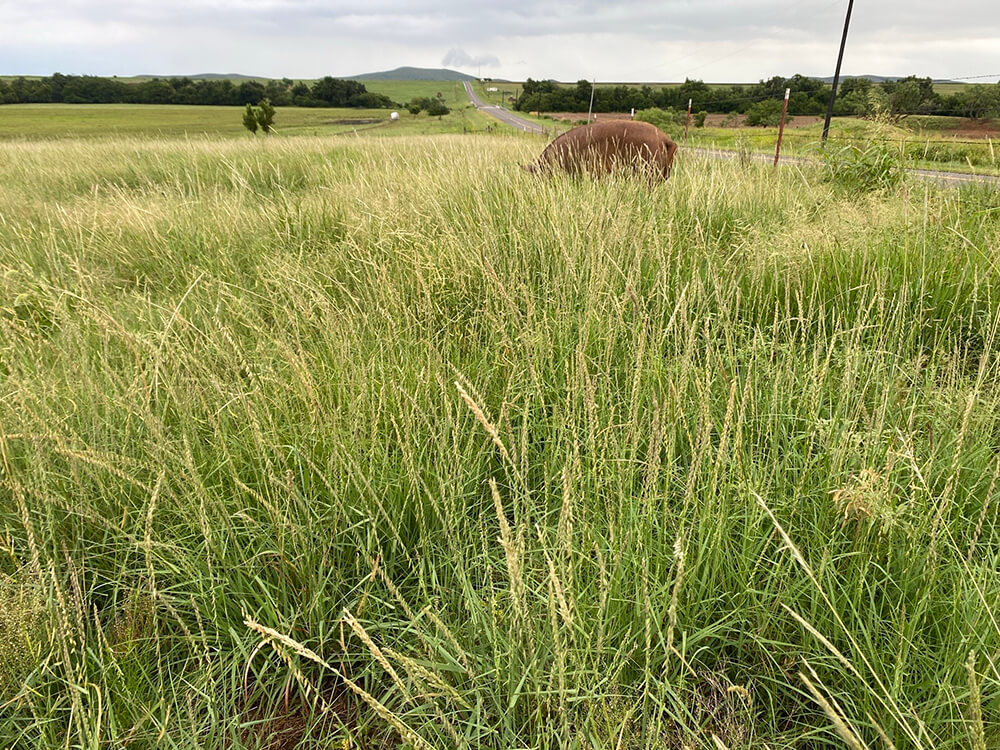
Rather than spending great amounts of money transitioning more of the land to better support cattle, I adjusted to animals that matched the landscape, with goals of improving the ecosystems and soils. In 2020, I took advantage of an area that was ready for small ruminants, adding sheep and goats to control brush. In addition to foraging on brush, they graze grass by using their lips to pick off leaves rather than removing the stem and seed head. This allows native grasses to reach full maturity, seed out and, I hope, re-encroach the lands that were either grazed or plowed in the past. I now have transitioned to sheep as the primary livestock on the land due to profitability and increase in turnover on investment.
As my farm continues to grow as a functioning ecosystem, I can see that the diversity I’ve injected readily creates more diversity and opportunity each year. I’m now beginning to see wildlife in areas that didn’t have it previously. Quail and turkeys have moved in because insect life has grown and diversified with the plant communities. I’m inspired to get my farm to look more and more like the rich diversity I see in the Wichita Mountains Wildlife Refuge and native prairie next door.
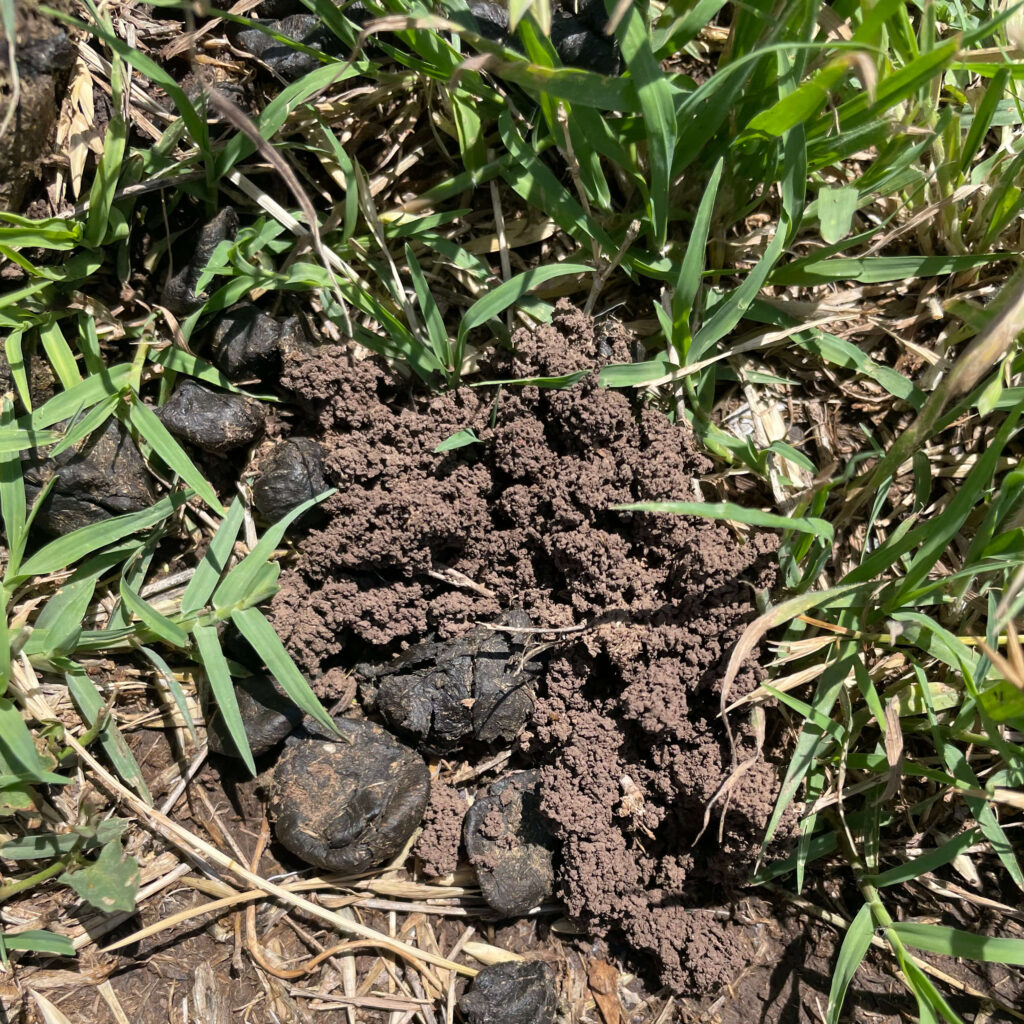
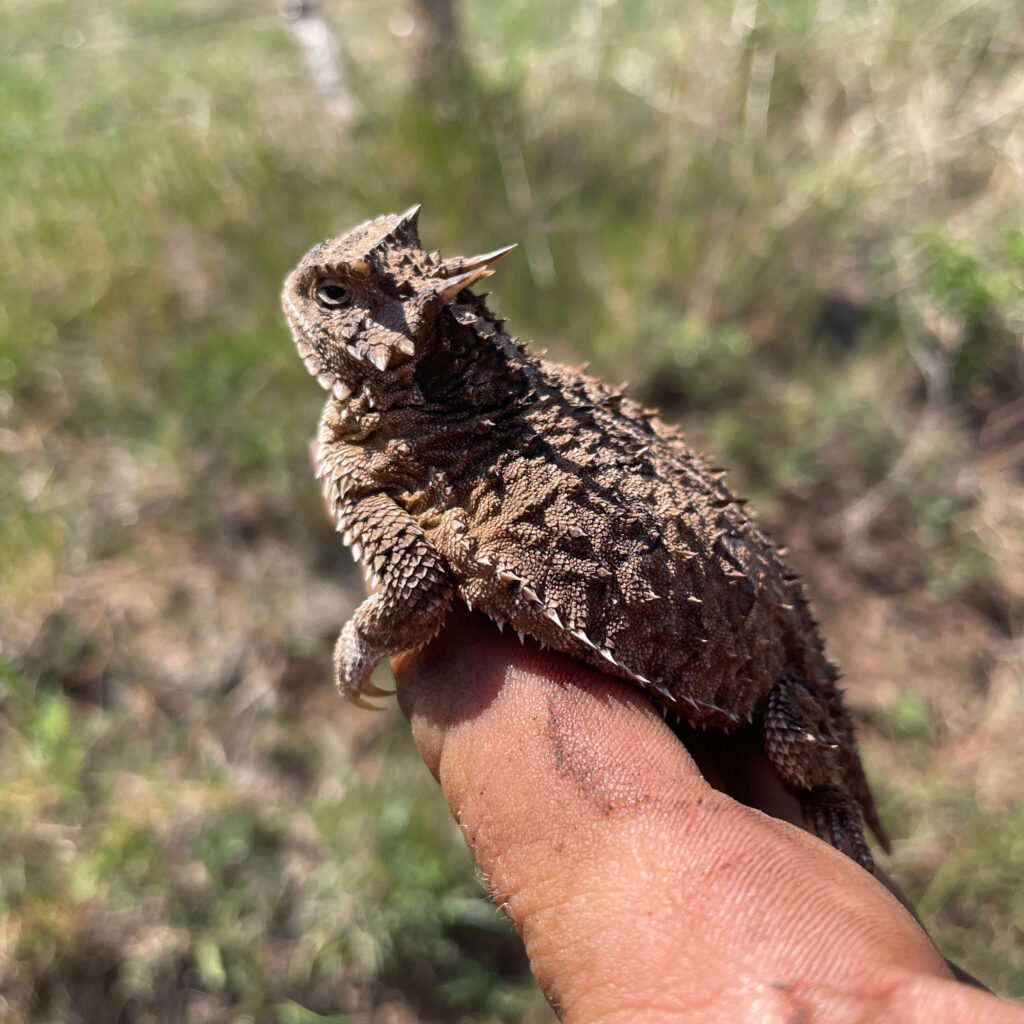
Selling directly to consumers
Diversity on the farm also has provided more market space for my direct-to-consumer products. Many producers across the U.S. booked processing dates and sold varying types of finished beef as COVID-19 struck. Because I began direct-marketing my grass-finished beef as other producers were doing the same, it was a struggle to enter the market with beef alone.
However, by also producing a pastured pork product, I was able to grow and differentiate my business. I now offer a diversity of USDA cuts by bundle and choice. Consumers appreciate the diversity and options as they search for the food they put on their tables. As I continue to grow in direct marketing, I hope to offer an even wider biodiversity of on-farm products to my consumer base.
Already I’ve found a market for weaned piglets raised in a natural system among homesteaders who want two or three pigs for their property and with producers who want to finish out pasture-raised feeder pigs started on a non-soy and non-GMO diet. I also have added pastured, free-range laying hens for targeting pest species in my operation, primarily grasshoppers. In 2021, I brought in 500 laying hens and, within four days, I had resold 400 of them for a profit for people to raise their own eggs. This year alone, I have sold 2,200 laying hens, with 2,400 more coming the end of May for resale and to run on pasture for pest control.
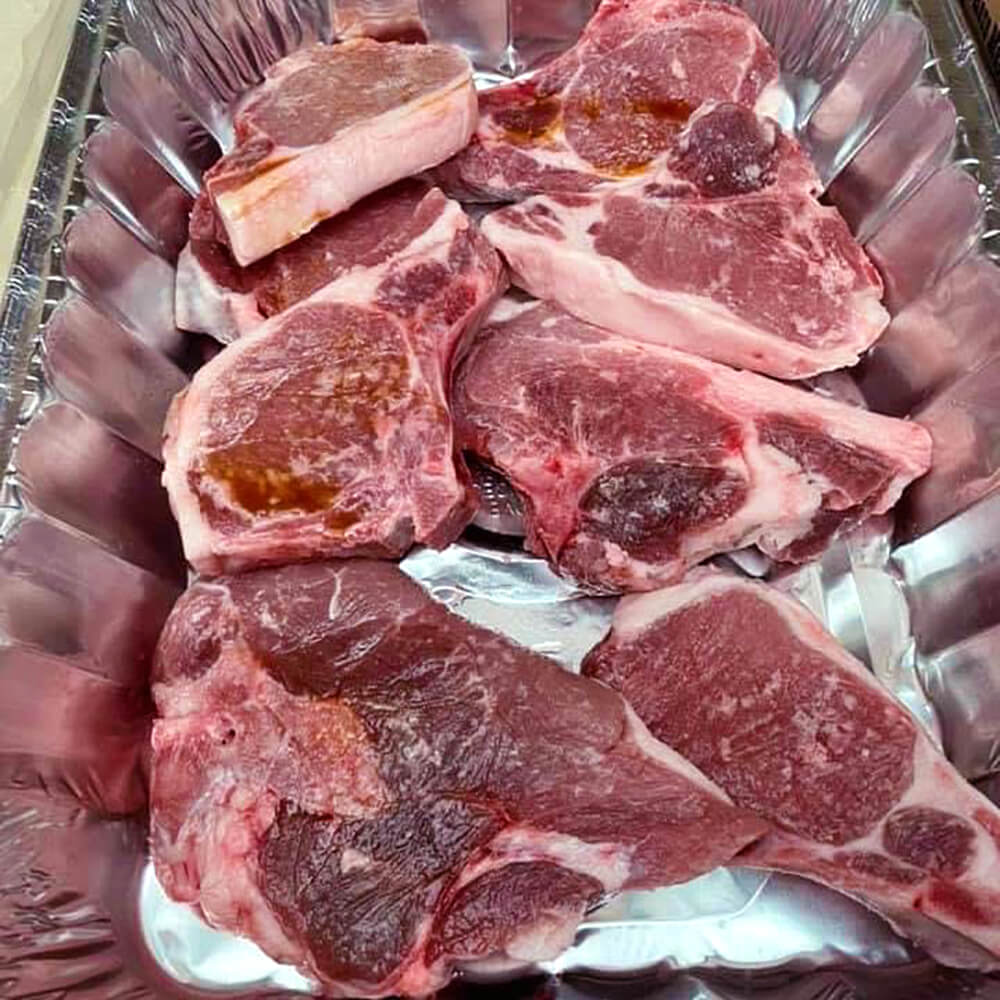
Vision for the future
As I mentioned, I admired my grandfather’s cattle ranch as I grew up. Though I only saw the end result – his retiring as a cattle rancher – what I didn’t realize was that his cattle-ranching success came later in his life. Early on, he too began with sheep and even the same breed of hogs (Tamworths) to build his farming enterprise in lean times. He, too, used diversity to survive and build his operation in Nebraska but, unfortunately, he didn’t imagine his kids or grandkids would have a passion for farming and ranching. He built a succession plan around dividing and selling the ranch versus passing it on intact to future generations. However, I hope to match his ability to be adaptable through diversity to continue to build my own operation here in southwest Oklahoma, even through adverse times.
My vision is to be married, raising a family on the land with healthy, nutrient-dense and diverse foods. I envision heading down to the creek with my family: birds chirping, bees buzzing, wildflowers blooming, the fresh aroma of healthy soil looming in the air just after a refreshing rain, the wildlife abundant on the land. Our livestock are out on the horizons working for us; and as a family, we are going fishing knowing we built back a diverse ecosystem that will be handed down and support generations to come.
I truly believe we don’t own the land for ourselves, but rather are leasing it from our future generations. As stewards, we need to continue to improve it for them.
The photos in this article were provided by the author and used with their permission.
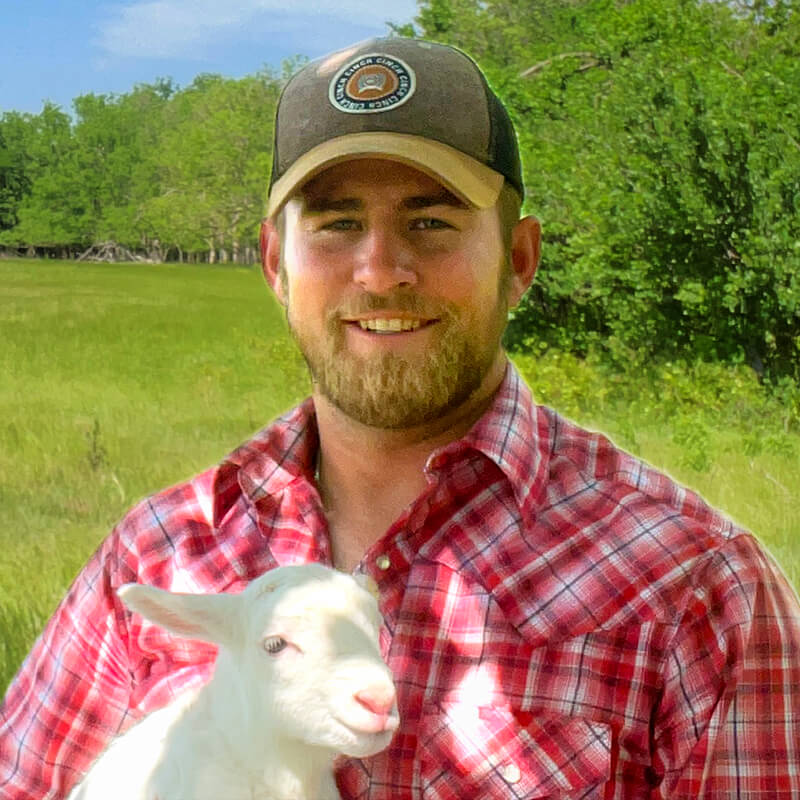
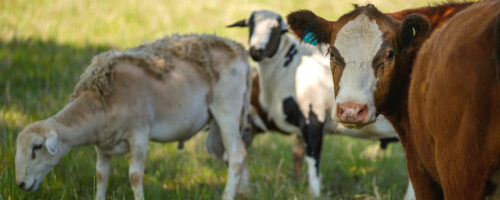
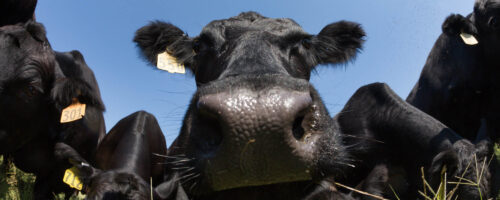
Comment